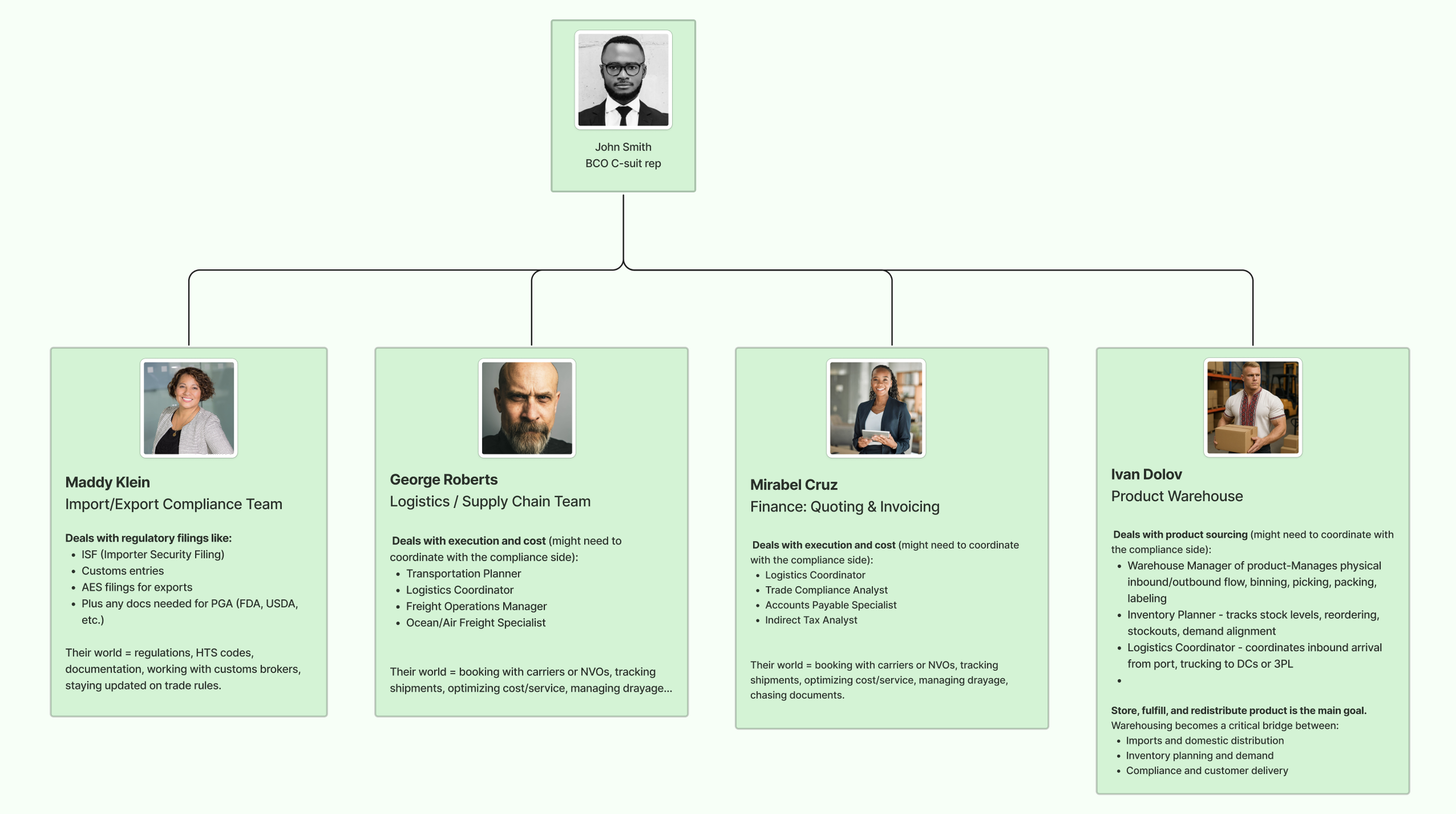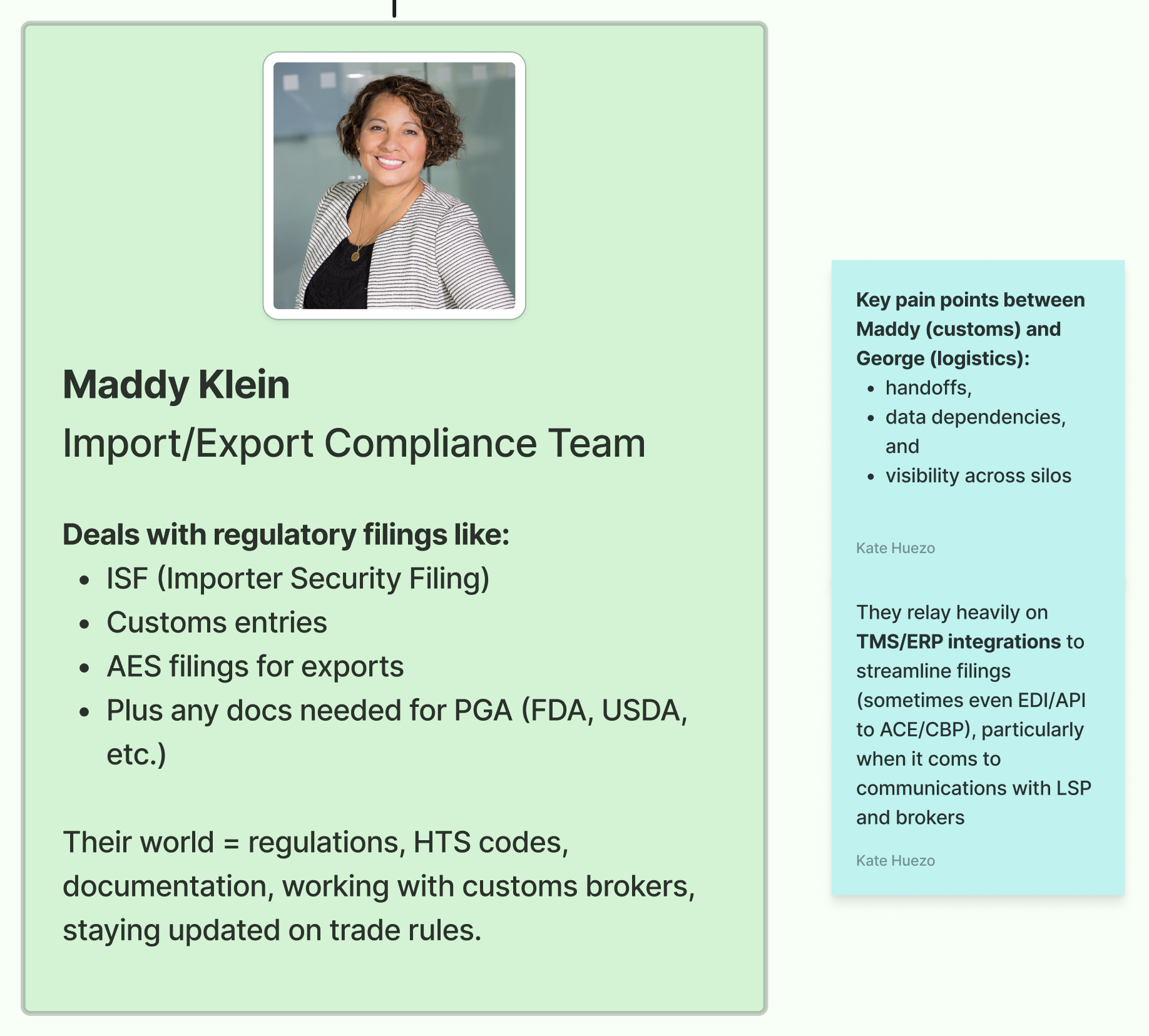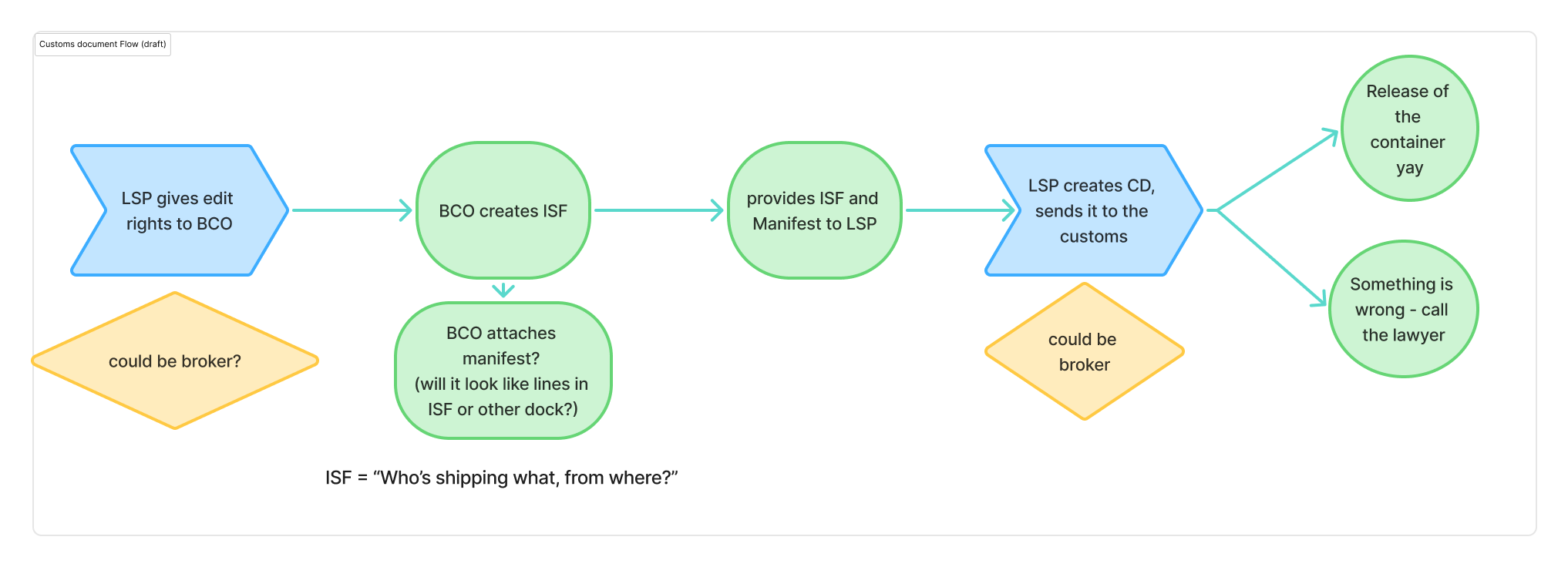From Structure to Flow: Designing for Real User Needs in Global Trade
Structure is my love language as a designer. Without it, product teams chase features instead of solving user problems.
And it’s not just startups that struggle with clear information architecture — even Fortune 500 companies do. When you zoom in, the same root issues appear:
Features get messy and ineffective.
User stories stay vague.
Flows don’t connect end-to-end.
Good structure brings clarity to user needs. It forces us to ask not just what users want, but what problem lies beneath that want.
Step 1: Mapping the Organization
To start, I mapped a Beneficial Cargo Owner (BCO) company structure, breaking down user roles and tasks. This makes one thing very clear: each team’s success depends on accurate handoffs and visibility across silos.
Company structure
Step 2: Zooming in on Compliance (Meet Maddy)
Let’s take Maddy from the Import/Export Compliance team.
Her world is filings and regulations: ISF, customs entries, AES filings, PGA docs. One mistake here can cost thousands of dollars (example penalties).
So what matters most to Maddy?
Data dependencies → she needs the right shipment details at the right time.
Visibility across silos → smooth handoffs with logistics and brokers.
Role card + painpoints
Step 3: Understanding the Document Flow
Next, I mapped out the customs document flow. This highlights where gaps happen: unclear ownership, duplicate docs, missed handoffs. For Maddy, every gap = higher chance of error.
Document flow draft, not the final version and may contain indiscrepancies.
Step 4: Designing for Real Impact
With this structure in place, we can finally ask the right design questions:
What would a screen that helps Maddy actually do her job look like?
Should her filings appear in a list? Or a dashboard widget with statuses?
What actions need to be surfaced upfront to cut her work in half?
For example, on ISF filings, Maddy wants to know:
How many are filed?
How many are pending?
Which ones are at risk?
So the design must include clear groupings and time-based views — not just another generic table.
The Bigger Picture
This is just one layer of how I structure projects.
Design isn’t just pixels. It’s curating the right experience for the right role, in the right moment.
If you’re a startup drowning in features, or a team needing scalable UX foundations, let’s talk.


